Abstract
An inspiratory fall in systolic arterial pressure of more than 10 mm Hg (pulsus paradoxus) was noted in 30 of 61 patients with shock. Inspiratory right atrial pressures and total blood volumes were significantly lower in patients with pulsus paradoxus. Rapid infusion of dextran in 22 patients usually was effective in reversing the exaggerated inspiratory fall in systolic pressure. Total peripheral vascular resistance tended to be higher in the patients with pulsus paradoxus and administration of vasoconsrictor drugs often accentuated the respirator pressure variation.
Respiratory effects on blood flow in the aorta, pulmonary artery, and venae cavae were studied in anesthetized, closed-chest dogs. In the control state, pulmonary arterial flow increased during inspiration but aortic flow remained nearly constant. After hemorrhage a sharp inspiratory fall in aortic flow was associated with decreased central blood volume and attenuation of the usual inspiratory increase in venae caval and pulmonary arterial flows. The respiratory changes in aortic flow after hemorrhage could be attributed both to depletion of the pulmonary reservoir and to alterations in pulmonary inflow related to changes in systemic venous return.
These data indicate that blood volume depletion may precipitate pulsus paradoxus both in the anesthetized dog and in the critically ill patient. The occurrence of pulsus paradoxus may aid in the clinical recognition of the common syndrome of occult hypovolemia in patients with shock in the absence of signs of blood loss.
Full text
PDF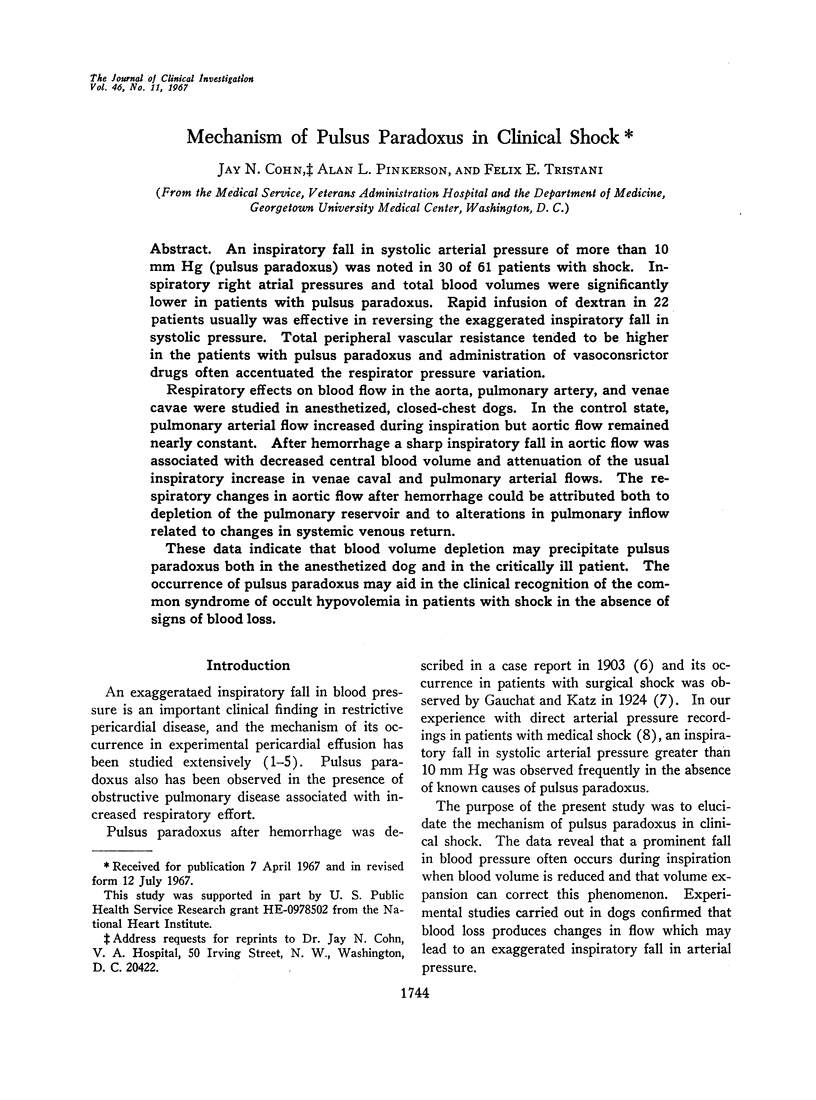
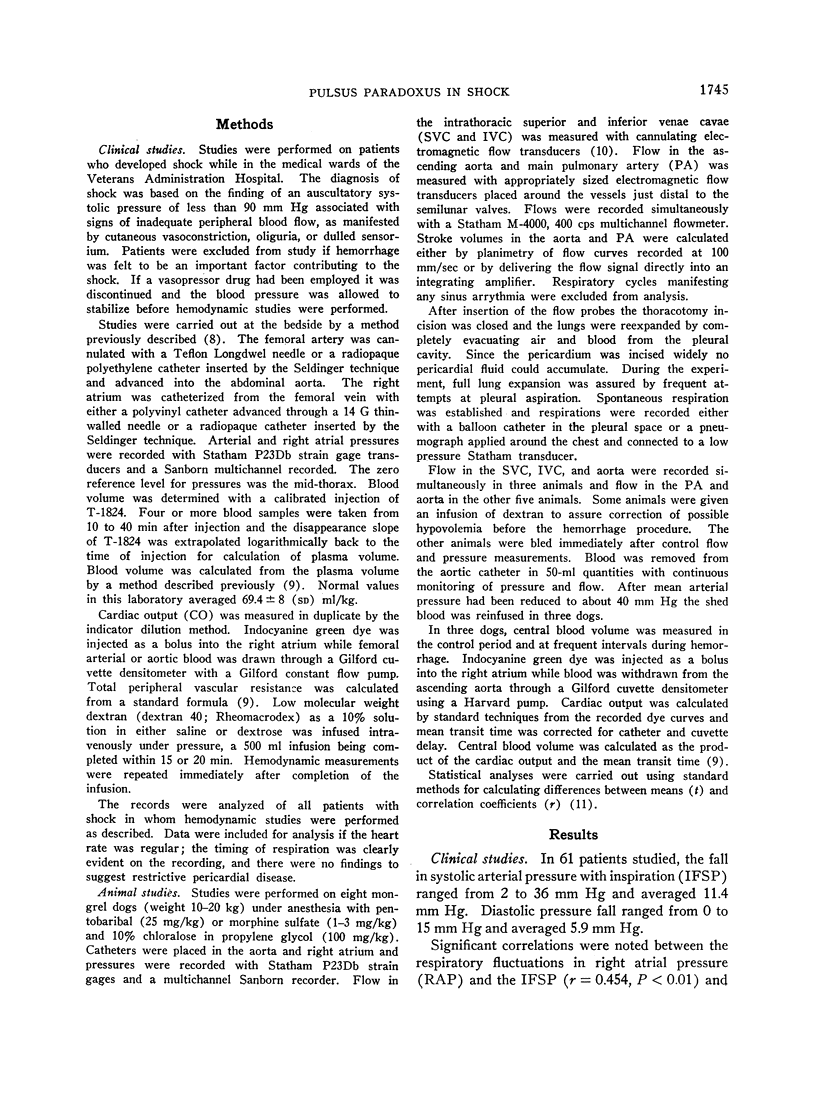
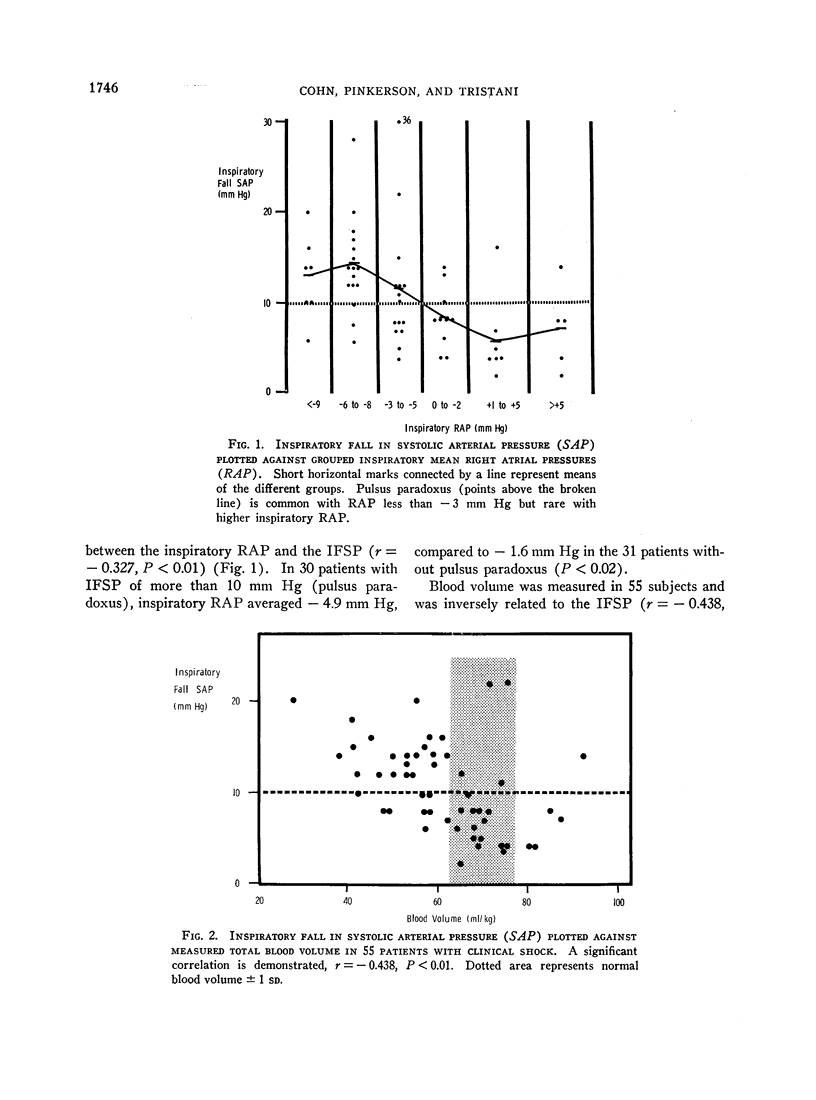

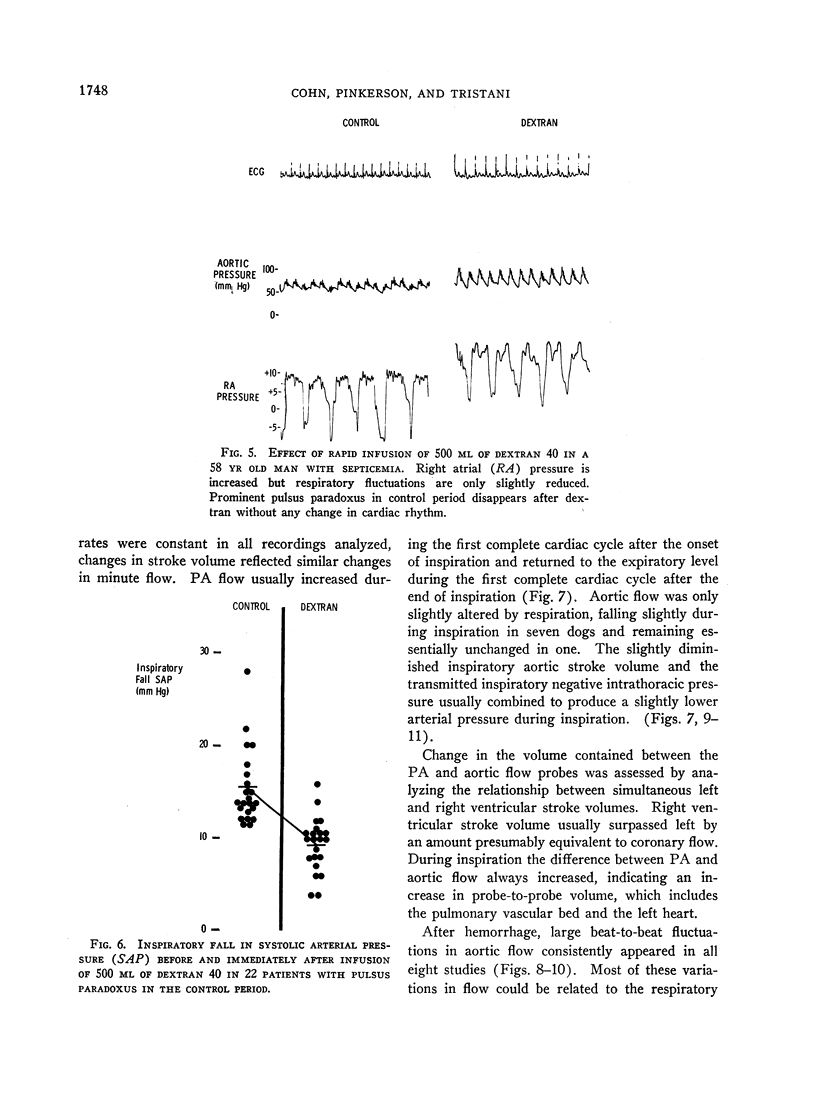
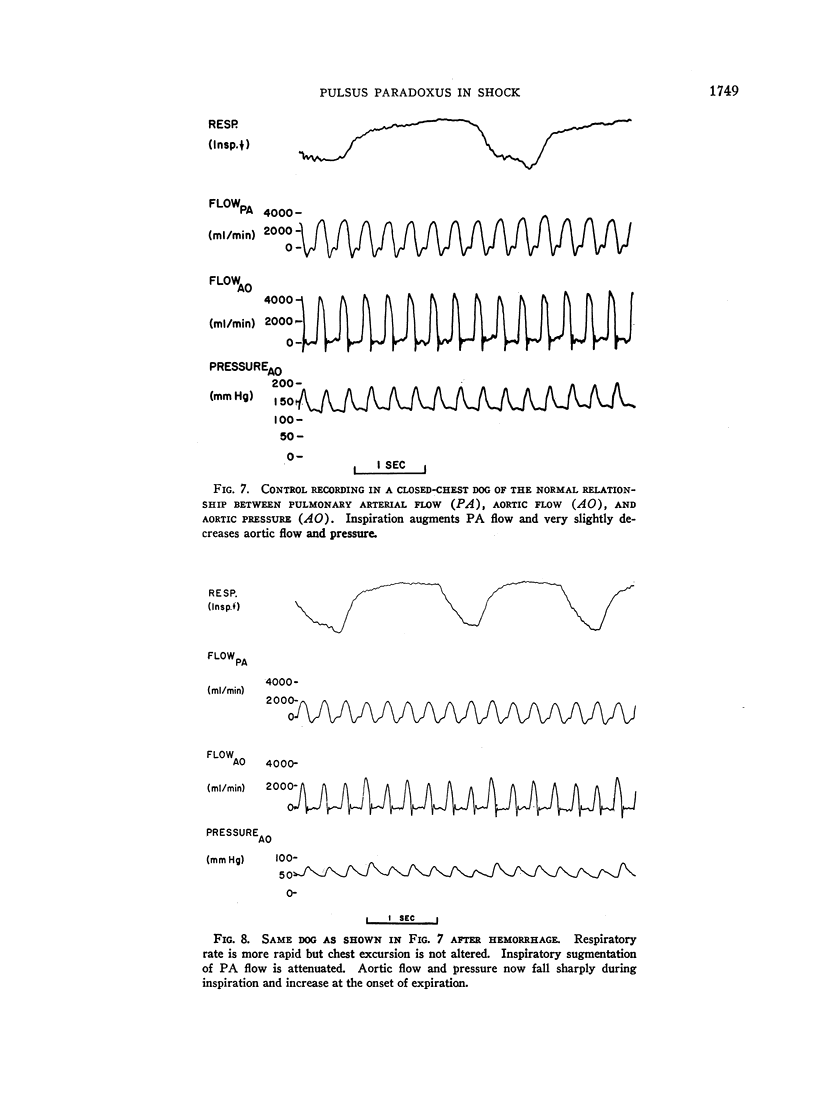
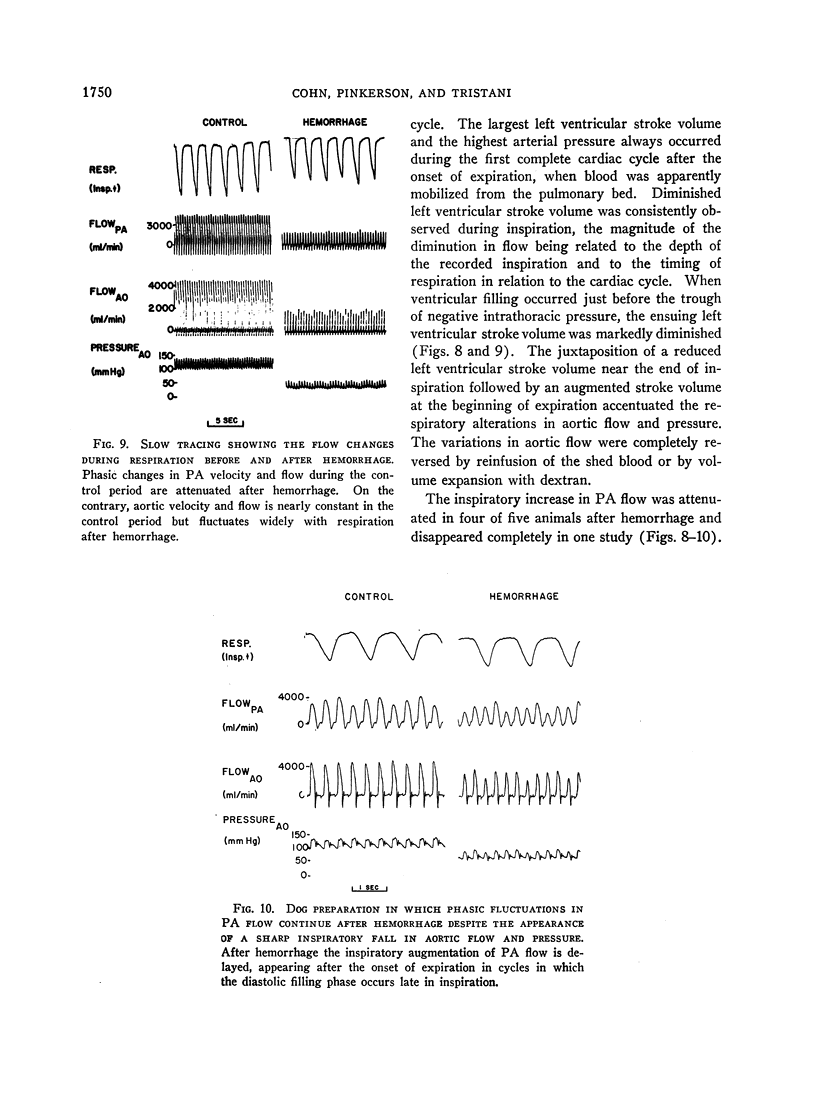
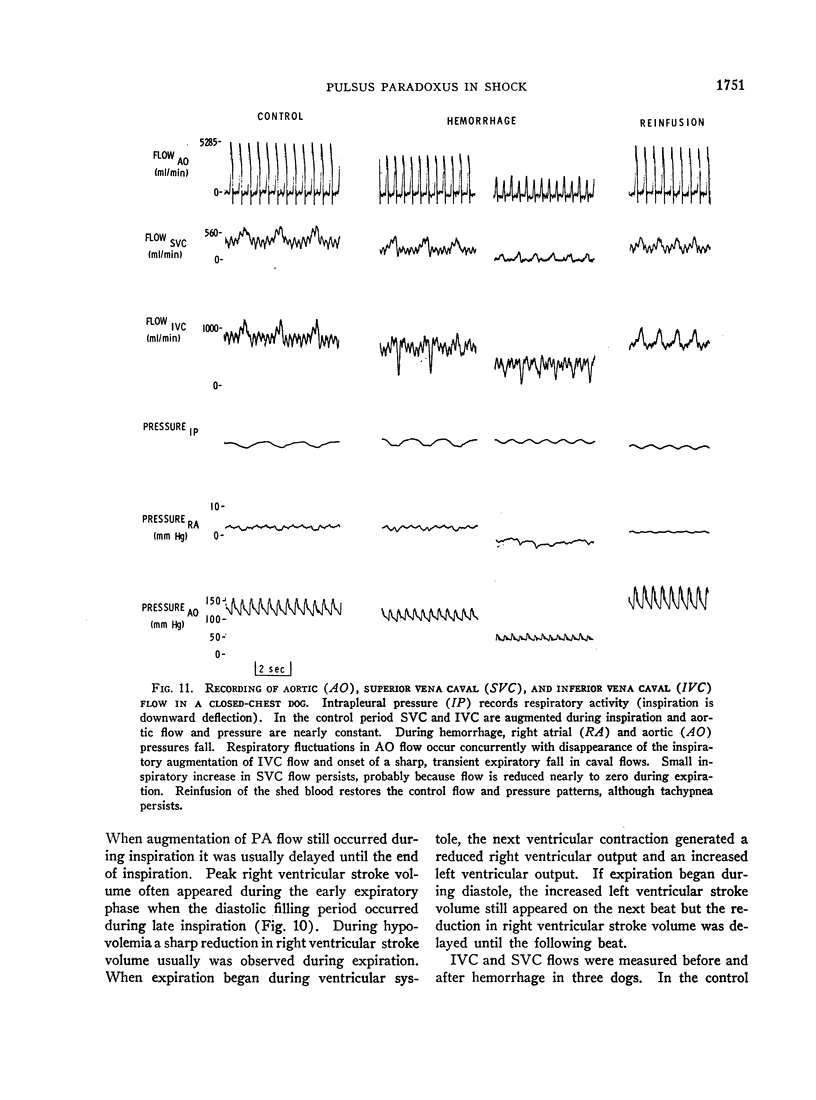
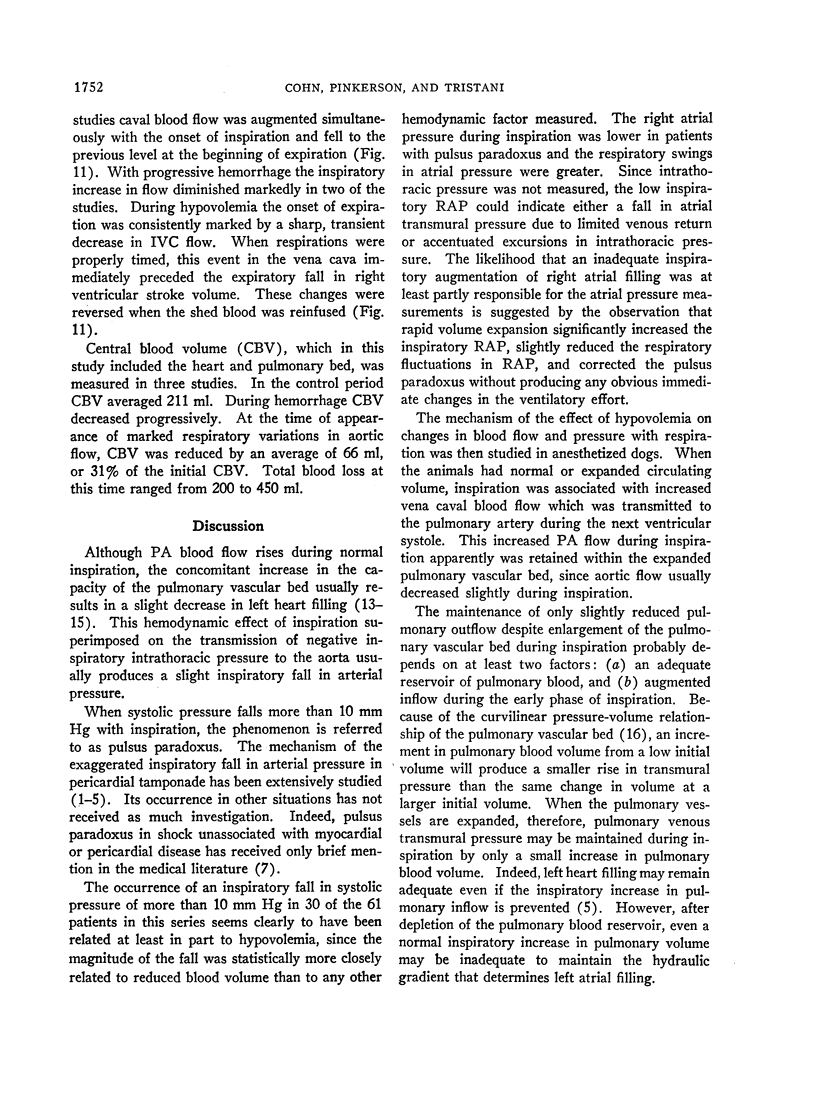
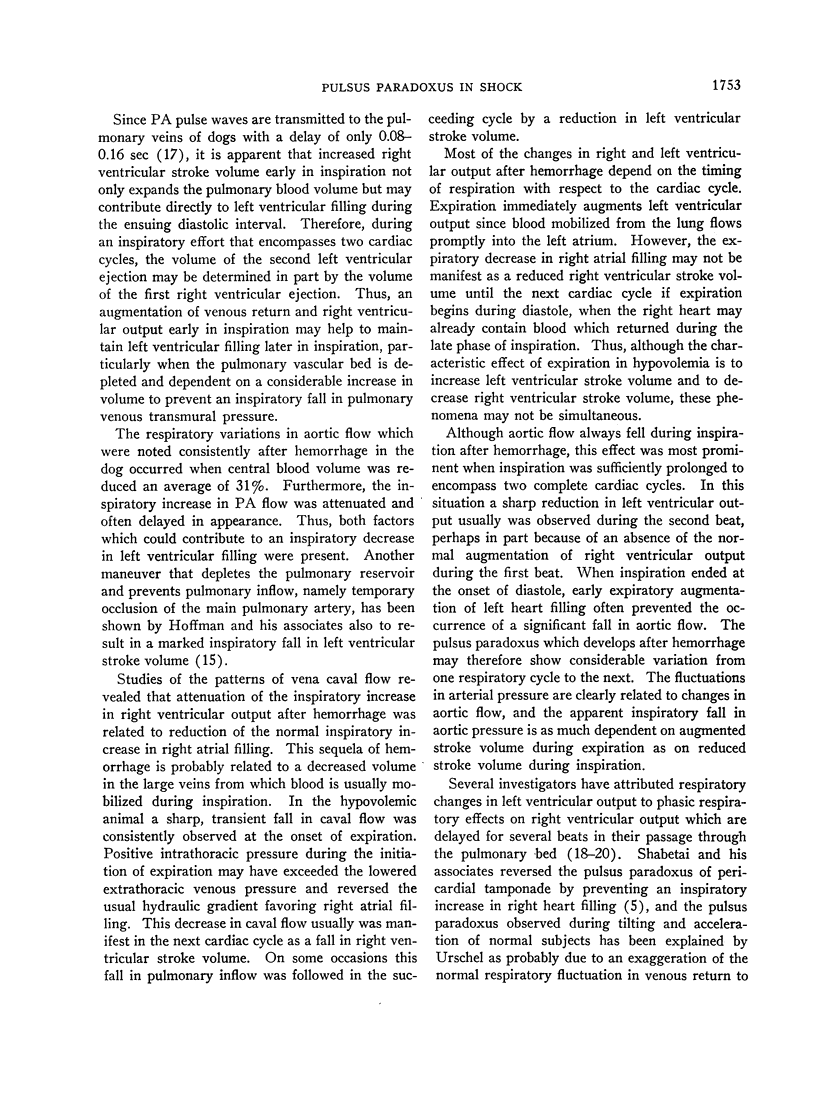
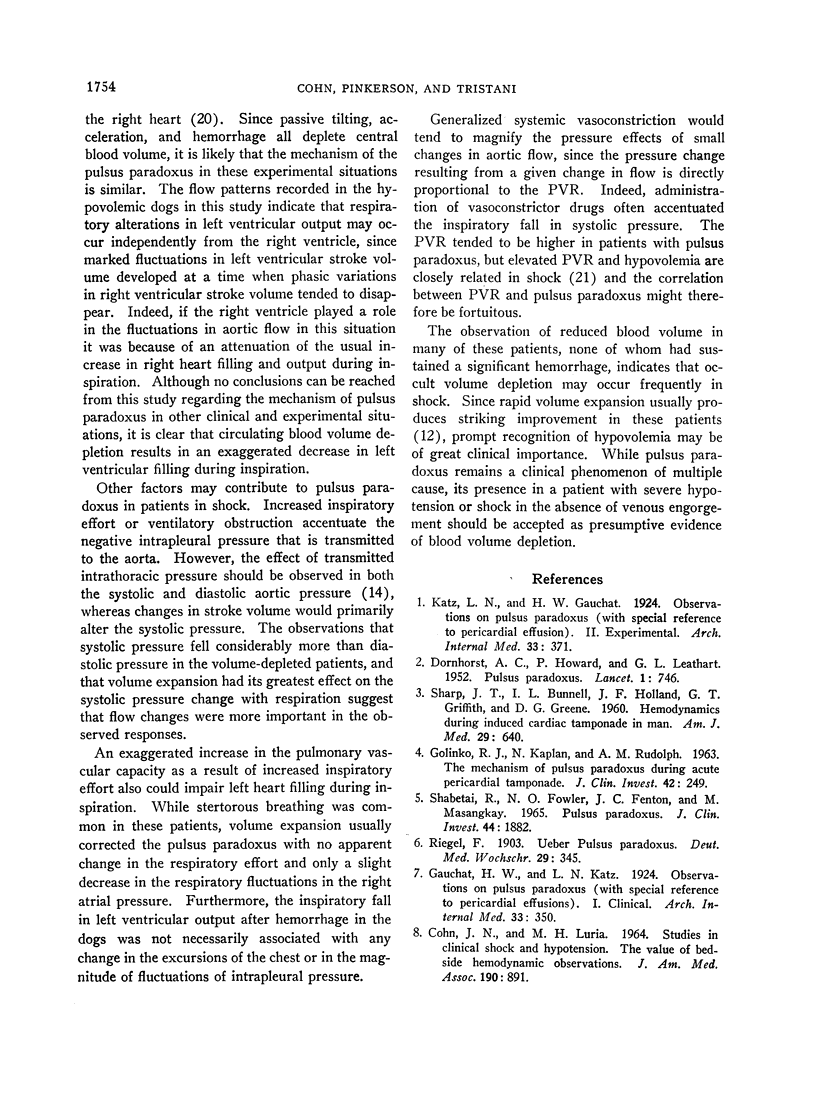
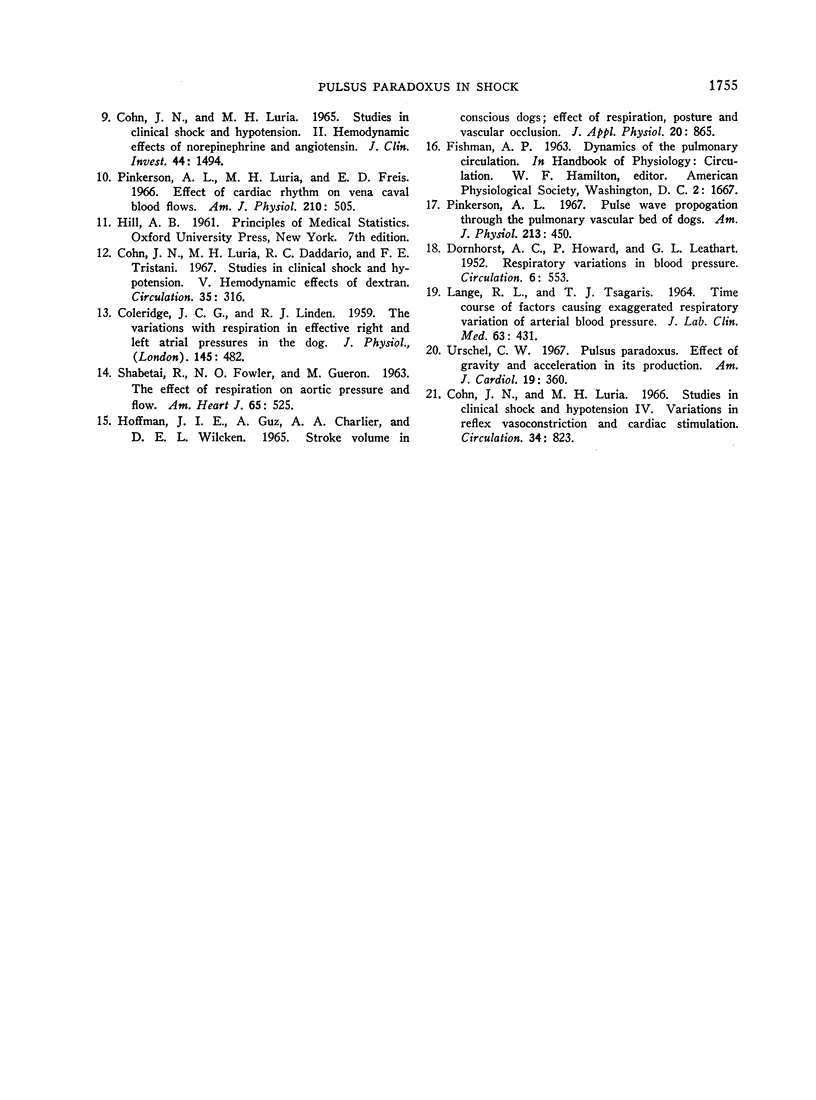
Images in this article
Selected References
These references are in PubMed. This may not be the complete list of references from this article.
- COHN J. N., LURIA M. H. STUDIES IN CLINICAL SHOCK AND HYPOTENSION. II. HEMODYNAMIC EFFECTS OF NOREPINEPHRINE AND ANGIOTENSIN. J Clin Invest. 1965 Sep;44:1494–1504. doi: 10.1172/JCI105256. [DOI] [PMC free article] [PubMed] [Google Scholar]
- COHN J. N., LURIA M. H. STUDIES IN CLINICAL SHOCK AND HYPOTENSION; THE VALUE OF BEDSIDE HEMODYNAMIC OBSERVATIONS. JAMA. 1964 Dec 7;190:891–896. [PubMed] [Google Scholar]
- COLERIDGE J. C., LINDEN R. J. The variations with respiration in effective right and left atrial pressures in the dog. J Physiol. 1959 Mar 12;145(3):482–493. doi: 10.1113/jphysiol.1959.sp006156. [DOI] [PMC free article] [PubMed] [Google Scholar]
- Cohn J. N., Luria M. H., Daddario R. C., Tristani F. E. Studies in clinical shock and hypotension. V. Hemodynamic effects of dextran. Circulation. 1967 Feb;35(2):316–326. doi: 10.1161/01.cir.35.2.316. [DOI] [PubMed] [Google Scholar]
- Cohn J. N., Luria M. H. Studies in clinical shock and hypotension. IV. Variations in reflex vasoconstriction and cardiac stimulation. Circulation. 1966 Nov;34(5):823–832. doi: 10.1161/01.cir.34.5.823. [DOI] [PubMed] [Google Scholar]
- DORNHORST A. C., HOWARD P., LEATHART G. L. Pulsus paradoxus. Lancet. 1952 Apr 12;1(6711):746–748. doi: 10.1016/s0140-6736(52)90502-3. [DOI] [PubMed] [Google Scholar]
- DORNHORST A. C., HOWARD P., LEATHART G. L. Respiratory variations in blood pressure. Circulation. 1952 Oct;6(4):553–558. doi: 10.1161/01.cir.6.4.553. [DOI] [PubMed] [Google Scholar]
- GOLINKO R. J., KAPLANN, RUDOLPH A. M. The mechanism of pulsus paradoxus during acute pericardial tamponade. J Clin Invest. 1963 Feb;42:249–257. doi: 10.1172/JCI104711. [DOI] [PMC free article] [PubMed] [Google Scholar]
- Hoffman J. I., Guz A., Charlier A. A., Wilcken D. E. Stroke volume in conscious dogs; effect of respiration, posture, and vascular occlusion. J Appl Physiol. 1965 Sep;20(5):865–877. doi: 10.1152/jappl.1965.20.5.865. [DOI] [PubMed] [Google Scholar]
- LANGE R. L., TSAGARIS T. J. TIME COURSE OF FACTORS CAUSING EXAGGERATED RESPIRATORY VARIATION OF ARTERIAL BLOOD PRESSURE. J Lab Clin Med. 1964 Mar;63:431–444. [PubMed] [Google Scholar]
- Pinkerson A. L., Luria M. H., Freis E. D. Effect of cardiac rhythm on vena caval blood flows. Am J Physiol. 1966 Mar;210(3):505–508. doi: 10.1152/ajplegacy.1966.210.3.505. [DOI] [PubMed] [Google Scholar]
- Pinkerson A. L. Pulse-wave propagation through the pulmonary vascular bed of dogs. Am J Physiol. 1967 Aug;213(2):450–454. doi: 10.1152/ajplegacy.1967.213.2.450. [DOI] [PubMed] [Google Scholar]
- SHABETAI R., FOWLER N. O., GUERON M. The effects of respiration on aortic pressure and flow. Am Heart J. 1963 Apr;65:525–533. doi: 10.1016/0002-8703(63)90102-9. [DOI] [PubMed] [Google Scholar]
- Shabetai R., Fowler N. O., Fenton J. C., Masangkay M. Pulsus paradoxus. J Clin Invest. 1965 Nov;44(11):1882–1898. doi: 10.1172/JCI105295. [DOI] [PMC free article] [PubMed] [Google Scholar]
- Urschel C. W. Pulsus paradoxus. Effect of gravity and acceleration in its production. Am J Cardiol. 1967 Mar;19(3):360–364. doi: 10.1016/0002-9149(67)90448-1. [DOI] [PubMed] [Google Scholar]



